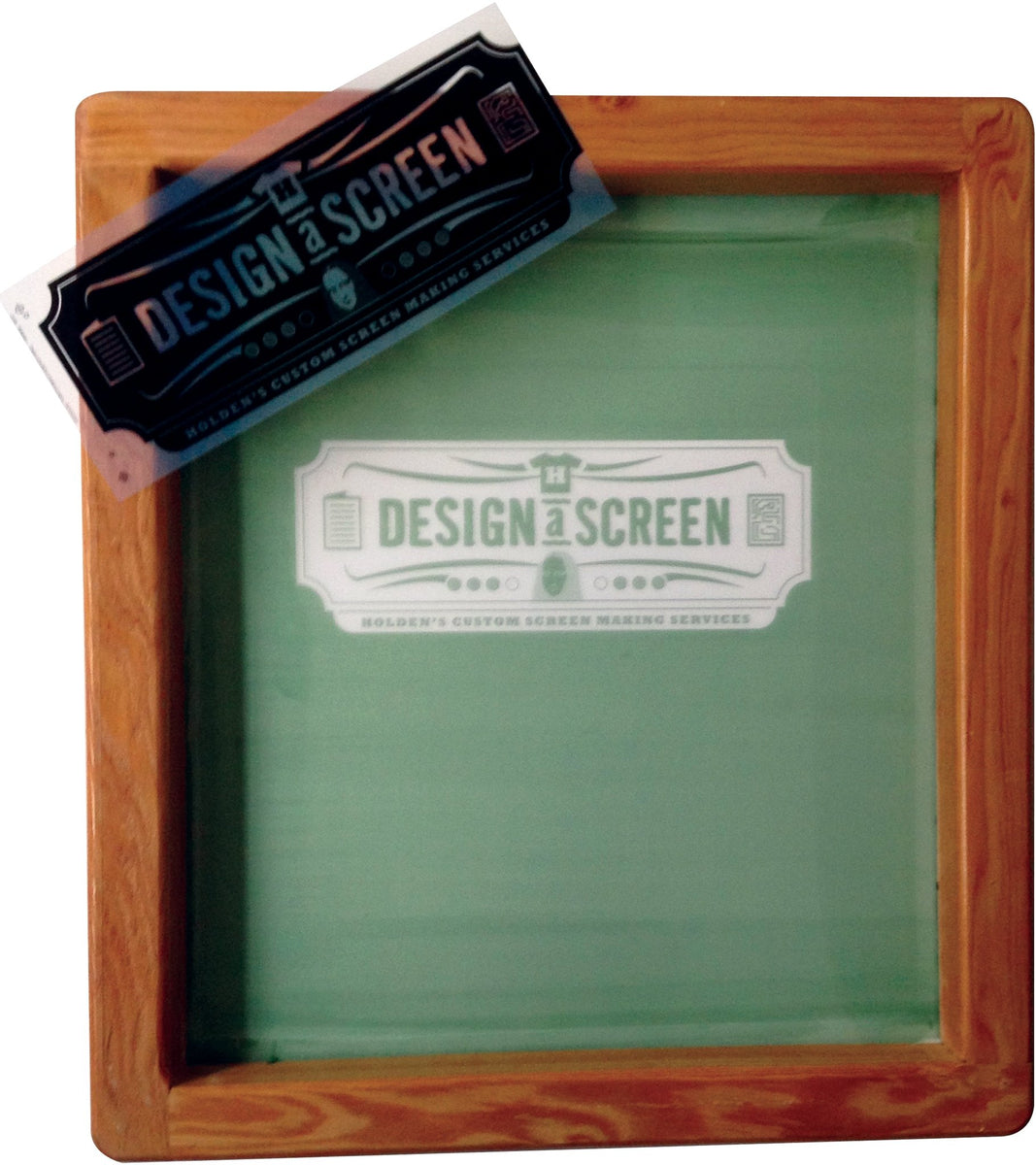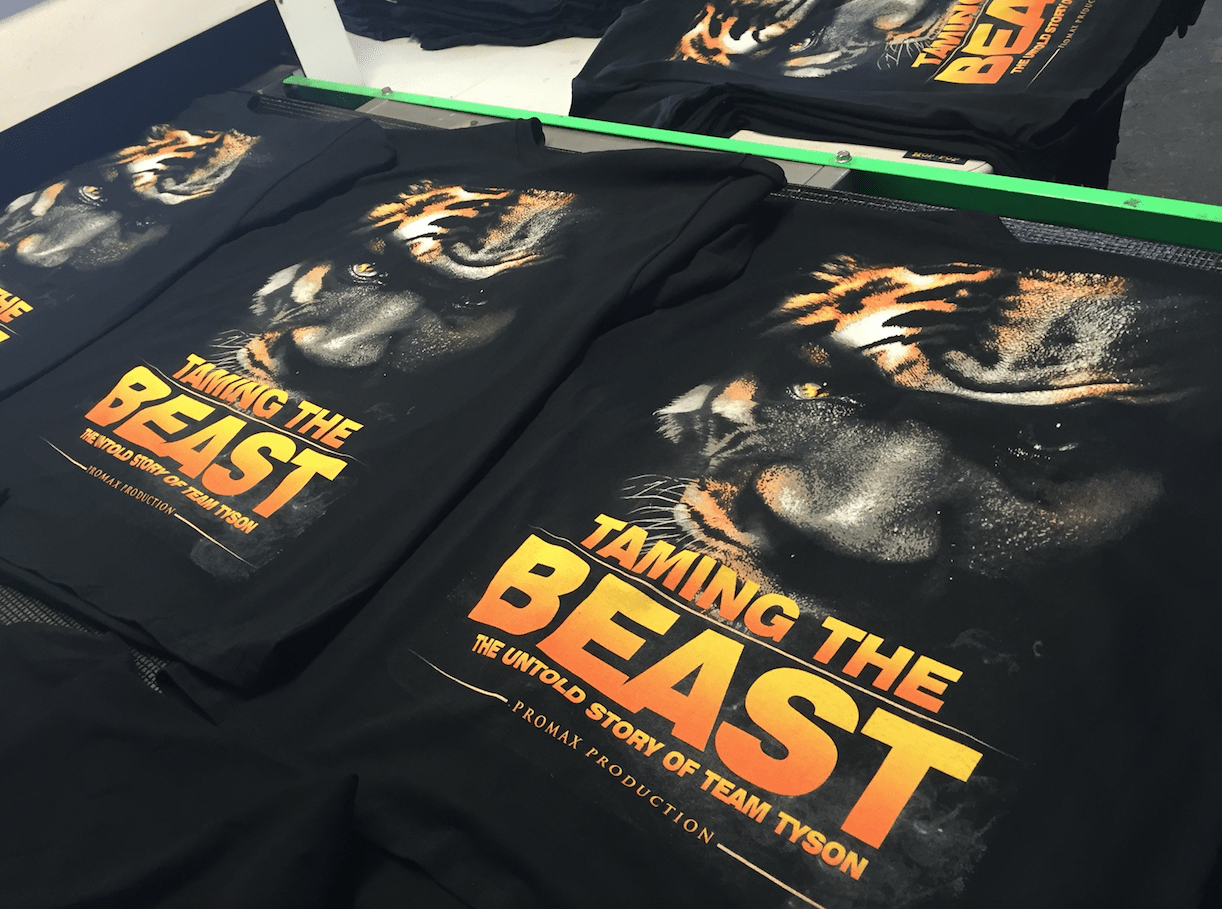Display Printing Uncovered: Everything You Need to Understand About T-Shirt and Garment Printing Strategies
Screen printing is an interesting technique that integrates art with strategy, supplying unlimited possibilities for creativity. Prepared to discover the essential elements that make display printing an art form?
The Essentials of Screen Printing: How It Functions
When you dive into display printing, you'll find it's both an art and a science. At its core, display printing involves developing a pattern, or screen, that permits ink to pass via just in certain locations (screen printing kit). You start by selecting your style and preparing your screen with a light-sensitive solution. As soon as you reveal this emulsion to light, it hardens, leaving your design as a negative room.
Next, you'll mix your inks and prepare your printing surface area. Placement the screen over the textile, after that use a squeegee to press ink through the display onto the garment. This process calls for precision, as you desire clear, dynamic prints. After printing, you'll treat the ink with heat, guaranteeing it sticks to the material and lasts through laundries. Each action is important, and understanding them will boost your screen printing skills, changing simple garments into one-of-a-kind, expressive items.
Sorts Of Display Printing Techniques
When you comprehend the basics of screen printing, it's time to explore the different strategies that can boost your designs. One prominent technique is traditional screen printing, where ink is pushed with a stenciled display. This strategy is great for bold, dynamic shades. There's water-based ink printing, which uses a softer feeling and is eco-friendly, but it requires a different method to treating.
Another alternative is plastisol printing, understood for its resilience and vibrant shades, making it a preferred for many brand names. Experiment with halftone printing to create slope impacts and intricate styles.
Necessary Devices for Screen Printing
To achieve sensational lead to display printing, having the ideal equipment is essential. You'll require a durable display printing structure, which holds the mesh that moves your style onto the garment. Next, purchase high-quality squeegees; these are necessary for applying ink uniformly throughout the screen. You'll likewise call for an excellent exposure system to produce your displays, as well as a washout cubicle for cleaning them after usage. A trusted heat source, like a conveyor clothes dryer or warmth press, is vital for healing your prints to assure durability. Do not forget an appropriate office, equipped with tables and storage for your supplies. Protective equipment, such as masks and handwear covers, will certainly maintain you secure from chemicals and inks. With the right tools, you'll be well on your way to creating professional-quality prints.
Choosing the Right Inks and Materials
When selecting inks and products for display printing, you require to take into consideration the kind of ink that works best for your project. Think about textile compatibility to assure your layouts look wonderful and last lengthy. Additionally, check out green ink alternatives to make your printing procedure much more sustainable.
Sorts Of Screen Inks
Choosing the best screen ink is important for accomplishing vibrant, durable prints that fulfill your task's requirements. There are a number of types of screen inks to check out. Plastisol ink is preferred for its flexibility and ease of usage, supplying outstanding color opacity on dark textiles. Water-based ink, on the other hand, offers a softer feeling and is environmentally friendly, making it perfect for those looking to decrease their ecological impact. Discharge inks get rid of dye from the textile, leading to a soft, vintage appearance however require details handling. Lastly, specialized inks, such as metallic or glow-in-the-dark, can include special effects to your layouts. Evaluate your job needs and choose the ink that straightens finest with your wanted outcome.

Material Compatibility Considerations
Recognizing textile compatibility is essential for achieving top notch display prints, especially considering that various materials respond distinctly to various inks. When selecting inks, consider the fabric kind-- cotton, polyester, or blends. For cotton, water-based inks work well, providing softness and breathability. Polyester, on the other hand, usually requires plastisol inks for far better adhesion and dynamic colors. You might need to use a combination of both types if you're printing on blends. Always examine your inks on example textile to guarantee they stick properly and keep color honesty. In addition, remember that material weight and texture can influence the final end result, so picking the ideal ink and material combo is essential for your job's success.
Eco-Friendly Ink Options
Green inks are becoming a prominent option for display printers who want to lessen their ecological influence while keeping quality. When selecting inks, think about water-based inks, which are less unsafe and easier to clean up compared to typical solvents.
Additionally, search for inks made from renewable energies, such as soy or vegetable-based options. By selecting the best inks and materials, you'll not only produce spectacular styles yet additionally add to an extra lasting printing procedure. Make the switch, and your prints will reflect your commitment to the environment!
Preparing Your Design for Display Printing

Submit Format Needs
To ensure your layout looks vivid and sharp on textile, you'll need to pay close interest to submit layout needs for screen printing. Make sure your style has a clear history to avoid undesirable white edges on your prints. Maintain color modes in mind; CMYK is standard for display printing, so transform your RGB designs accordingly.
Color Separation Methods
Shade splitting up is an essential action in preparing your design for screen printing, and mastering it can substantially boost your print quality. You'll need to break your design into individual colors, as each color calls for a separate screen throughout printing. Begin by identifying all the shades in your layout and develop layers each. You can make use of software program like Adobe Photoshop or Illustrator to separate and separate colors efficiently. Be certain to save each layer as a separate documents, typically in a layout like TIFF or PSD. This precision not only assures precise color depiction yet likewise improves the printing process. By taking note of shade splitting up, you'll accomplish expert and vibrant cause your click this link screen-printed garments.
Resolution and Dimension
Achieving the best outcomes in screen printing begins with ensuring your style has the ideal resolution and size. Ideally, your artwork ought to be at least 300 DPI (dots per inch) for sharp, clear prints. If you use reduced resolution, your end product might look less than professional and pixelated.
When it pertains to size, think about the measurements of your print area. Style your art work to match the last print size, ideally producing it in the real measurements you'll be printing. In this manner, you'll prevent any type of unanticipated scaling issues.
Always inspect your layout in both vector and raster formats. Vector graphics can be scaled without losing high quality, making them ideal for screen printing. Preparing properly will assure your design looks outstanding on every garment!
Step-by-Step Screen Printing Process
Screen printing is a vibrant procedure that allows you to create dynamic layouts on numerous surface areas. To begin, you'll need a screen, emulsion, and your chosen ink. Prepare your display by cleansing it thoroughly. Next, apply the emulsion uniformly and allow it completely dry in a dark location. Once dry, subject your display to light with your layout positioned on it, which will certainly harden the emulsion where the light hits, producing a pattern - screen printing kit.
After rinsing the unexposed emulsion, your display prepares. Establish it up on your printing surface area and align your garment below it. Pour ink onto the screen and use a squeegee to press the ink with the stencil onto the material. Lift the screen thoroughly and let the print dry. Cure the ink using warmth to assure longevity. That's it! You have actually efficiently display published your style.
Tips for Effective Screen Printing Projects
While you're diving right into your display printing jobs, bear in mind that prep work is crucial to success. Begin by collecting all your products-- inks, squeegees, garments, and screens. A clean office assists protect against unwanted mistakes, so clean up before you start.
Following, validate your art work is high-resolution and effectively sized for your garment. Evaluate your screen for appropriate exposure and tidy it completely to avoid spots. When mixing your inks, comply with the manufacturer's guidelines to attain the ideal consistency.
Throughout printing, use even stress with your squeegee for consistent outcomes. Don't rush; take your time to validate each print satisfies your criteria. After printing, let your garments dry entirely prior to dealing with or packaging them.
Last but not least, always keep a sample of your help future reference. This method, you can analyze your development and enhance your strategies in time. Pleased printing!

Regularly Asked Questions
How Long Does It Take to Establish a Screen Printing Job?
Establishing a display printing work typically takes about thirty minutes to an hour. You'll prepare the displays, mix inks, and adjust the press. The moment differs based upon intricacy and experience, so stay organized!
Can I Publish on Various Fabric Keys In Making Use Of the Very Same Strategy?
Yes, you can print on different fabric types utilizing the very same strategy, yet you'll need to change your inks and settings. Some textiles take in ink in a different way, so experimenting guarantees the most effective outcomes for each product.
What Prevail Errors to Avoid in Display Printing?
When display printing, prevent common mistakes like making use check that of the wrong ink, disregarding proper direct exposure times, or avoiding pre-press checks. Constantly check your setup and keep clean displays to ensure quality outcomes each time.
How Can I Effectively Clean and Keep My Screen Printing Tools?
To appropriately tidy and preserve your display printing devices, you should on a regular basis wash displays with appropriate solvents, inspect squeegees for wear, and ensure all devices are kept completely dry and dust-free. Uniformity avoids pricey repair work and boosts performance.
Is Display Printing Eco-friendly Contrasted to Other Techniques?
Display printing can be more ecologically pleasant than other techniques, especially if you utilize water-based inks and eco-conscious products. By selecting lasting supplies and methods, you lower waste and reduce your effect on the world.
Display Printing Uncovered: Everything You Need to Know About Tee Shirt and Garment Printing Strategies
At its core, screen printing includes developing a stencil, or screen, that permits ink to pass through more info here only in details areas. Setting the display over the textile, then utilize a squeegee to press ink through the display onto the garment. One preferred method is standard display printing, where ink is pressed through a stenciled screen.When choosing inks and products for display printing, you require to take right into account the kind of ink that functions finest for your job.
Comments on “Artistic Silk Screen Printing for Limited Edition Prints”